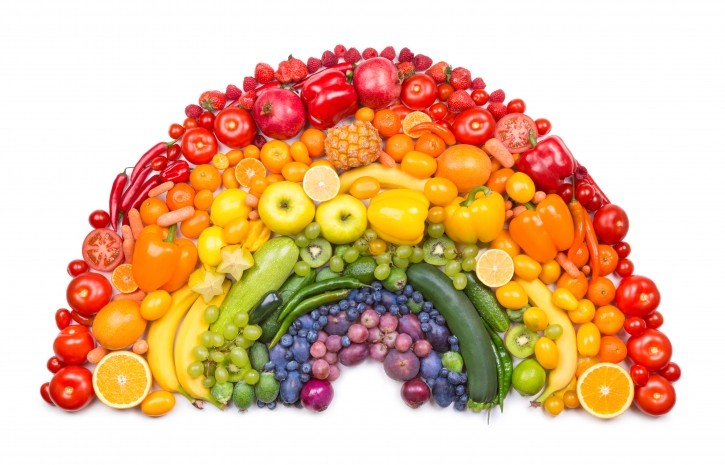Top 10 functional food and drink trends from the US

The Men in the aisles trend reflected the rise in single male households. Men now accounted for 43% of primary shopping and 46% help with food preparation, according to research conducted by the Food Marketing Institute (FMI) last year.
Food claims related to sodium content were very important to 56% of male shoppers, according to research conducted by Packaged Facts.
That was followed by claims related to sugar content, calories, total fat, trans fat, cholesterol, saturated fat and protein.
Grey matters highlighted the fact that by 2019, half of the US population will be more than 50 years old. This segment of the population will account for more than half of all consumer product spending, based on IRI research conducted in 2014.
Adults aged 55–64 were the most likely to be trying to lose weight; those aged 65-plus were most likely to be trying to maintain weight.
Chemical consciousness was the third top food trend identified by the IFT. This was based on the observation that ‘clean’ claims had more appeal than generally healthy descriptors.
Preservative-free was second only to no trans-fat/no partially hydrogenated oils as the most important consumer food claim in Mintel’s 2015 research.
“Eight in 10 adults define preservative-free foods/beverages as healthy, and 78% say no artificial ingredients translates to healthy,” said the IFT.
Personalised nutrition plans was the fourth most important trend: In 2015, 30% of food shoppers participated in at least one specialised eating plan.
Millennials were the most likely to adopt a specialised eating approach, as well as the most likely to try more than one plan, according to FMI. This generation favoured vegetarian, juice cleanse/detox, Paleo, or vegan styles of eating.
A New Natural Hierarchy reflected the growing importance of minimally processed foods and natural ingredients. Those were identified for the first time among the hot culinary trends for 2016, judged by the American Culinary Federation.
“One quarter of consumers say that their food habits characterise them as living a minimally processed lifestyle and 30% were making a strong effort to eat more minimally processed foods,” said the IFT.
Lifestyle enhancers appeared in sixth place. This trend highlighted the fact consumers, especially women and young adults, were increasingly concerned about conditions that impact their ability to function day by day.
Definitely deficient grew out of advice that Americans were not consuming enough of some nutrients, as judged by the 2015 Dietary Guidelines for Americans.
More than two thirds (64%) of adults regularly looked for foods/beverages with added vitamins or minerals last year.
The Food MD (medical doctor) trend reflected the growing health concerns of consumers. Worries about high cholesterol, weight loss and high blood pressure were leading them to seek out functional foods and beverages, based on Packaged Facts research.
Wholly functional, in ninth place, drew on research revealing that one-third of consumers strongly agreed naturally occurring nutrients in foods were better for them than added nutrients.
The final trend Healthy convenience was based on one-in-five adult’s preference to eat on the run, grabbing food whenever they can.
Meanwhile, for more details of these trends, visit our photogallery.
The top 10 trends were selected by the institute’s Elizabeth Sloan, who assembled information from a wide range of industry sources.
The IFT has more than 17,000 members from over 95 countries. Its membership included: food scientists, technologists and related professionals from the academic world, government, and industry.
The current IFT president is Colin Denis, who will chair the Food Manufacture Group’s Food safety conference in London on Thursday October 13.
IFT’s top 10 functional food trends
- Men in the aisles: The rise of single male households
- Grey matters: By 2019, half of the US population will be over 50 years old
- Chemical consciousness: Clean claims have more appeal than generally healthy descriptors
- Personalised nutrition plans: Last year 30% of food shoppers participated in at least one specialised eating plan
- New natural hierarchy: Minimally processed foods/ natural ingredients were cited for the first time among the ‘hot’ culinary trends for 2016 identified by the American Culinary Federation
- Lifestyle enhancers: Consumers, especially women and young adults, are more concerned about conditions that impact their ability to function day-by-day
- Definitely deficient: Americans are not consuming enough of some nutrients, according to the 2015 Dietary Guidelines for Americans
- Food MD: High cholesterol, followed by weight loss and high blood pressure are the top three health concerns motivating consumers to seek out functional foods/beverages
- Wholly functional: One-third of consumers strongly agree that naturally occurring nutrients in foods are better for them than added nutrients
- Healthy convenience: One in five adults eats on the run, grabbing food whenever they can





















